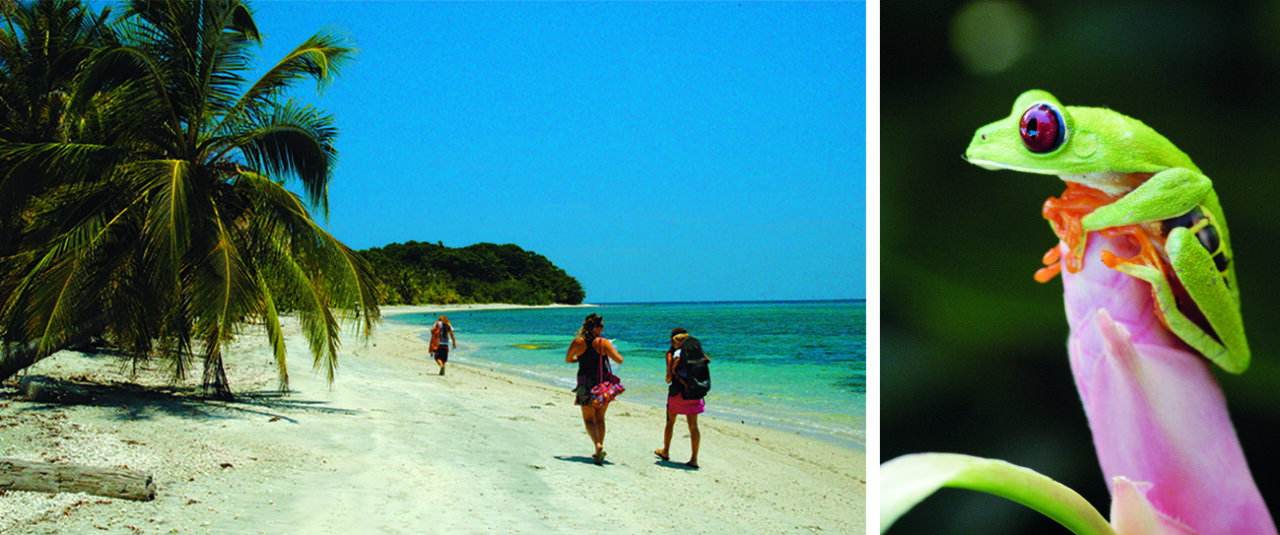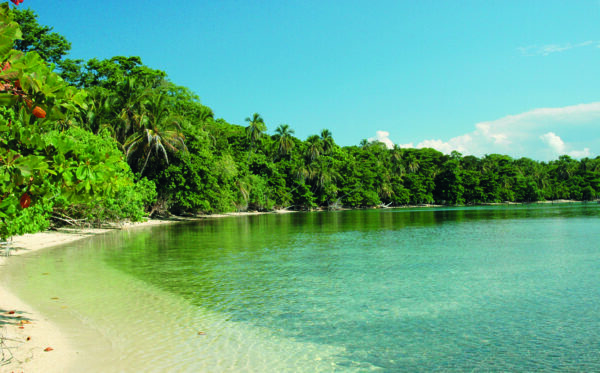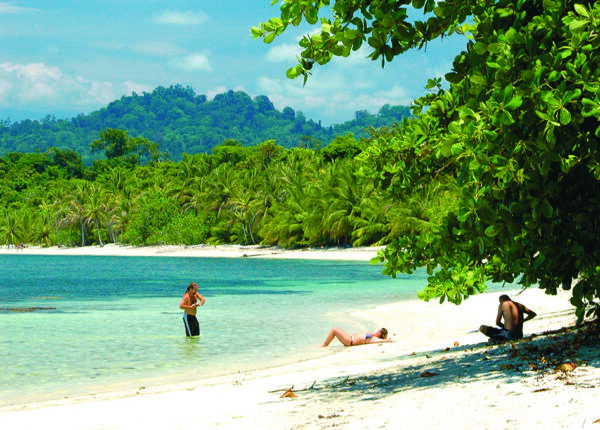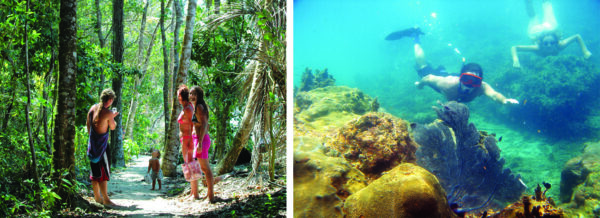
Cahuita National Park
Cahuita´s National Park is located on the Caribbean coast, 42 km. south of Limon. Its creation was in May 1978 and it protects a natural area of 1,067 terrestrial hectares, 22,400 marine hectares and 600 coralline hectares. The park is part of the tropical Caribbean basal region, its maximum height is of 10 meters above sea level and is within the Life zone known as Humid Tropical Forest. It preserves one of the finest coastal sites in the country, surrounded by white sand beaches awarded the Ecological Blue Flag in the areas of Puerto Vargas and Playa Blanca, and an sea of turquoise blue waters.

Cahuita is mainly composed by a swamp that occupies the existent depression between the coral platform and mainland, which was formed due to a tectonic uplift. It protects a swamp forest, whose main tree species are the cativo (Prioria copaifera), the dragon blood tree (Pterocarpus officinalis), the golden fruit (Virot koschnyi), yolillo palms and mangroves mostly composed by the red mangrove (Rhizophora mangle).

Other present habitats are the not flooded mixed forest with species like the genip (Genipa americana), and the monkey fruit (Garcinia intermedia), and the coastal vegetation that has coconut palm trees (Cocos nusiferas) and common sea grape (Coccoloba uvifera).
The fauna is varied, its common to spot howler monkeys, raccoons and coatis, among birds there are species like the green ibis (Mesembrinibus cayennensis), the green kingfisher (Chloroceryle inda), the night heron (Nyctanassa violet) and the boat-billed heron. They are also abundant amphibians and crabs, such as the atlantic ghost crab (Ocypode quadrata) and also on the beaches you have polychaetes, gastropods, isopods and decapods. Its beaches are chosen by several sea turtles species to nest, such as green and hawksbill turtle.

This wilde area protects one of the best developed coralline reefs of the Caribbean coast and one of the most important within Costa Rica, which extends from Punta Cahuita, between the river Perezoso and Puerto Vargas. Part of the reef platform is submerged approximately 11 meters below sea level and over 1 meter emerged after the earthquake of 22 April 1991. It has an extraordinary marine biodiversity, consisting of 35 coral species, including elkhorn (Acropora palmata) and the symmetrical brain coral (Diploria stringosa and Colcophyllia natans), mixed with 128 algae species, 140 mollusks species, 44 crustaceans species, 123 fish species of different colors and sizes, the queen angel fish (Holacanthus ciliaris), the blue angel fish and the blue parrotfish being the most striking ones. You also find barracudas, suckerfish, stingrays, lobsters, moray eels, sea urchins and sponges wich provides with food to the hawksbill turtles, 3 shark species such as the white-tipped shark (Triaenodon obesus).

Among the main atolls for diving and snorkeling we recommend the Coral Perezoso in front of River Perezoso´s mouth and Coral Eduardo in the area of Puerto Vargas. For hiking lovers the park has a trail of 7 km. that runs along the coast between Cahuita and Puerto Vargas. In both sectors the park has access and information booths. The park admission fee is voluntary. Contact numbers for the park administration offices are 2755-0461 and 2755-0302.


Fotografías de Paco Salmerón
Texto de Juan Carlos Lorite y Paco Salmerón